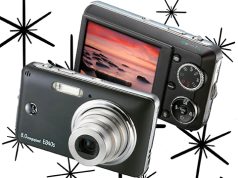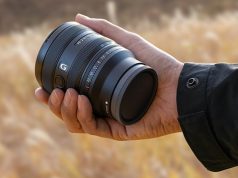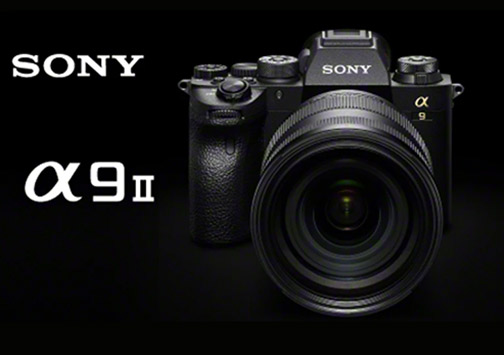
San Diego, CA—Sony Electronics introduced the Sony Alpha 9 II (model ILCE-9M2) full-frame interchangeable-lens camera. The new model was created for working professionals in the fields of sports photography and photojournalism.
The Alpha 9 II builds on the legacy of the original Alpha 9, maintaining its speed performance; this includes blackout-free continuous shooting at 20 frames per second (fps) with autofocus as well as autoexposure tracking at 60 calculations per second.
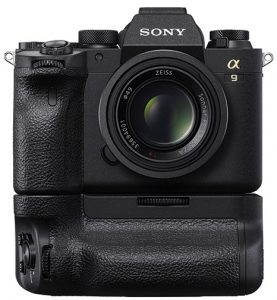
Moreover, updates include enhanced connectivity and file delivery; continuous shooting at 10 fps with a mechanical shutter; evolved autofocus (AF) performance with new algorithms; and a redesigned build to further durability and operability. In addition, an upgraded Bionz X image-processing engine benefits from a 35mm full-frame, stacked 24.2-megapixel Exmor RS CMOS image sensor with fast readout speed. The processor also works with its front-end LSI to enhance speed in autofocus/autoexposure detection, image processing and face detection.
“The voice of our customers is absolutely critical to Sony; we are always listening,” said Neal Manowitz, deputy president for Imaging Products and Solutions Americas at Sony Electronics. “The Alpha 9 II is the direct result of our work with agency, sports and news photographers since the launch of the original Alpha 9.
“We have added connectivity and network capabilities that drastically improve the professional workflow; while also making enhancements to design, interface and processing power that complete the user experience. Complemented by our extremely versatile E-mount system—with 55 native lenses introduced at this point, including super-telephoto 600mm and 400mm G Master series lenses—this new camera is a tool unlike any other for professionals, whether in the field or on the field.”
Sony Alpha 9 II Connectivity Functions
The Alpha 9 II includes a built-in 1000BASE-T Ethernet terminal. As a result, it enables gigabit communication for high-speed, stable data transfer operations. In addition, File Transfer over SSL or TLS encryption (FTPS) increases data security.
PC remote (tether) shooting performance also is improved, with decreased release time lag and reduced live view screen delay when using the Remote Camera Tool desktop app. The speed of the camera’s built-in wireless LAN functionality was also increased; Sony added a 5 GHz (IEEE 802.11ac) band in addition to the 2.4 GHz provided in the Alpha 9.
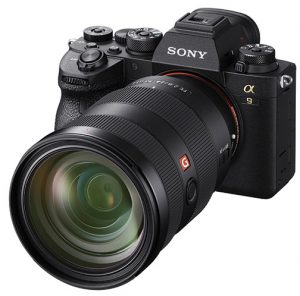
Furthermore, to improve the speed of news agencies’ workflow, the 9 II has a new voice memo function that allows spoken information to be attached to images; photographers and editors can replay the voice memos when reviewing images.
Alternatively, a field photographer can use the ‘transfer & tagging add-on’ Imaging Edge app to transfer voice tags with the images to a mobile device. Those voice memos are automatically converted to text and added to the JPEG images as IPTC metadata. All of this occurs either automatically or manually.
As a result of combining wireless voice/image transfer and automatic voice-to-text conversion with the ability to auto-transfer images with attached voice memos via FTP, it is possible to shoot and transfer the results to an FTP server without having to operate a smartphone. Moreover, FTP settings within the app are sent to a camera via Bluetooth for a faster workflow.
Faster Autofocus Performance
The Alpha 9 II shoots continuously and silently at 20 fps for up to 361 JPEG images or 239 compressed RAW images, with no viewfinder (EVF) blackout. This allows photographers to follow the subject and action with no interruption to the EVF during picture taking. The a9 II shoots at 10 fps, about 2x the speed of the Alpha 9, with its mechanical shutter. In addition, it can function while continuously calculating autofocus and autoexposure at up to 60 times per second.
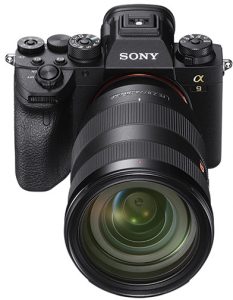
Also useful for sporting events, the camera now offers an anti-flicker shooting mode. This mode automatically detects and adjusts for the presence of fluorescent or artificial lighting.
Further, the camera’s focus system has 693 focal-plane phase-detection AF points that cover 93% of the image area. It also uses 425 contrast AF points. As a result, the hybrid autofocus system accurately captures fast-moving subjects.
Notably, the system also provides real-time eye AF with right eye/left eye selection and real-time eye AF for animals; real-time eye AF for movies; selectable focus frame color; real-time tracking; and touch pad focus point control while using the viewfinder.
Additional Features
The 9 II has upgraded dust and moisture resistance to meet the needs of professionals in challenging outdoor conditions. Stronger seals are provided at all body seams as well as the battery compartment cover and media slot.
It also adopts Sony’s 5-axis optical in-body image stabilization system that provides a shutter speed advantage of 5.5 steps. And Sony improved its button design and feel. It increased the diameter and feedback of the AF-ON button; included a refined multi-selector joystick; an exposure compensation dial lock button; and a redesigned shape and new position for the rear dial.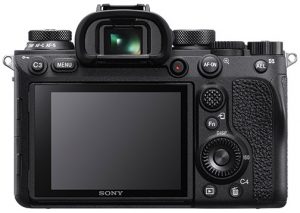
Other features include: improved grip configuration; a redesigned 500,000-cycle shutter mechanism that suppresses movement that can cause image blur; a USB Type-C connector for USB 3.2 Gen 1 data transfer; dual media slots compatible with UHS-I and UHS-II SD cards; and a digital audio interface on the multi-interface shoe to connect the new ECM-B1M shotgun microphone or XLR-K3M XLR adapter kit.
The Sony Alpha 9 II will ship in November 2019; it will have a price of $4,500.


